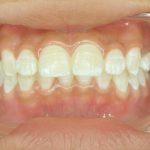Say Goodbye to White Spots on Teeth: Effective Home Remedies for Removing Dental Stains

When it comes to dental hygiene, one of the most common concerns people have is the appearance of white spots on their teeth. These spots can be caused by a variety of factors, such as poor oral hygiene, excessive fluoride intake, and certain medical conditions. Not only do they affect the aesthetic appeal of your smile, but they can also be a sign of underlying dental problems that require treatment. Fortunately, there are several effective home remedies that you can use to remove dental stains and restore the natural whiteness of your teeth. From oil pulling to baking soda, there are a plethora of natural remedies that can help eliminate white spots on your teeth. While professional teeth whitening treatments can be expensive and time-consuming, these home remedies are affordable and easy to incorporate into your daily routine. By using these tried-and-tested remedies, you can achieve a brighter, healthier smile in no time. In this article, we will explore some of the most effective home remedies for removing dental stains and restoring the natural whiteness of your teeth.
White spots on teeth are a common dental issue caused by a variety of factors. These spots can be a cosmetic concern, but they can also indicate a more serious underlying problem, such as enamel hypoplasia or fluorosis. Enamel hypoplasia is a condition in which the teeth do not form properly, leading to thin, weak enamel that is prone to damage. Fluorosis, on the other hand, is caused by excessive fluoride exposure during tooth development, leading to white spots and other discoloration. Other common causes of white spots on teeth include poor oral hygiene, acidic foods and drinks, and orthodontic treatment. Fortunately, there are several effective home remedies for removing dental stains and restoring the natural color of your teeth.
Dental stains can form due to a variety of reasons, such as poor oral hygiene, consumption of certain foods and drinks, and smoking. The most common type of dental staining is extrinsic staining, which occurs on the surface of the teeth and is caused by pigments from food, drink, and tobacco. These pigments can penetrate the enamel of the teeth, causing discoloration and making the teeth appear yellow or brown. Intrinsic staining, on the other hand, occurs inside the tooth and can be caused by factors such as trauma, aging, and certain medications. Regardless of the cause, dental stains can be unsightly and can lead to a lack of confidence in one’s smile.
Having white spots or stains on your teeth can not only be unsightly, but it can also be an indicator of poor oral hygiene. These stains can be caused by a variety of factors, including certain foods and drinks, smoking, and even some medications. Removing dental stains is important not only for cosmetic reasons, but also for the health of your teeth and gums. Stains can lead to tooth decay and gum disease if left untreated, which can ultimately result in tooth loss. By removing these stains, you can improve your overall oral health and maintain a brighter, healthier smile. There are several effective home remedies for removing dental stains that are easy to implement and can help you achieve a healthier, more vibrant smile.
Baking Soda and Hydrogen Peroxide
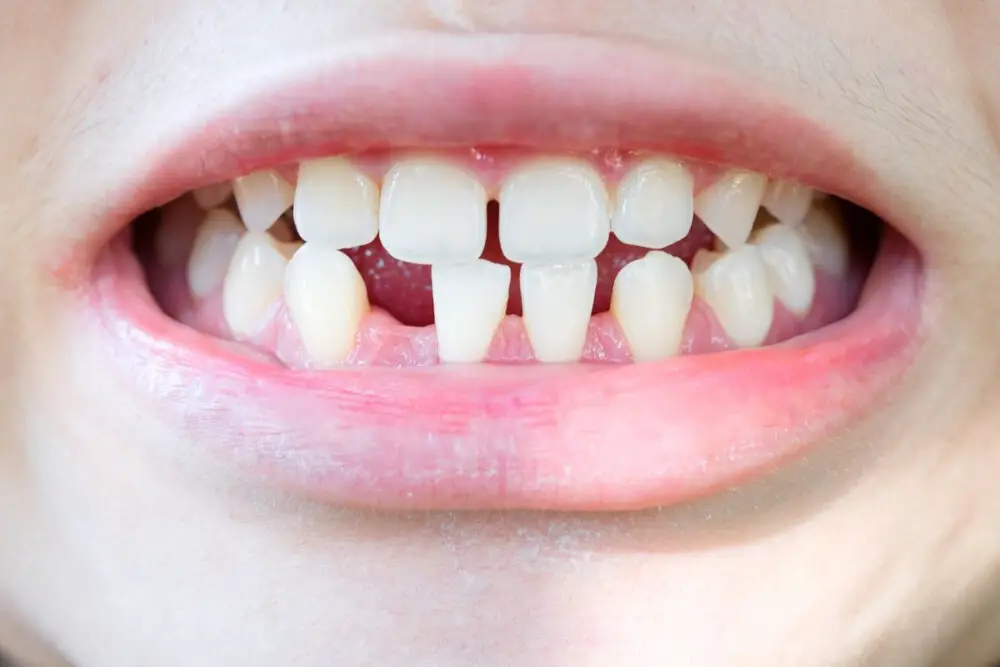
Baking soda and hydrogen peroxide are two natural ingredients that can work wonders when it comes to removing dental stains. Baking soda, also known as sodium bicarbonate, is a mild abrasive that can gently scrub away surface stains on the teeth. It also has alkaline properties that help neutralize the acids in the mouth, preventing the growth of bacteria that can cause tooth decay and gum disease. Hydrogen peroxide, on the other hand, is a natural whitening agent that can lift stains and brighten the teeth. When combined with baking soda, it creates a powerful mixture that can effectively remove dental stains and improve the overall appearance of the teeth. To use baking soda and hydrogen peroxide as a home remedy for dental stains, mix a small amount of baking soda with hydrogen peroxide to form a paste. Apply the paste to your teeth with a toothbrush or your finger and leave it on for a few minutes. Be sure to rinse your mouth thoroughly with water afterwards. It’s important not to use this mixture too frequently, as overuse can damage the enamel on your teeth. However, using this remedy once a week can help you maintain a bright, white smile and say goodbye to those pesky white spots on your teeth.
Baking soda, also known as sodium bicarbonate, is a versatile ingredient that is popularly used in cooking, cleaning, and even dental care. It is a mild abrasive that can help remove surface stains on teeth, making them appear whiter and brighter. Hydrogen peroxide, on the other hand, is a powerful oxidizing agent that can effectively remove deeper stains on teeth. It works by breaking down the chemical bonds of the stain molecules, making them easier to remove. When combined with baking soda, hydrogen peroxide can create a powerful teeth whitening solution that can help you achieve a brighter and more confident smile. It is important to note, however, that excessive use of these ingredients can cause tooth sensitivity and damage to the enamel, so it is best to use them in moderation and under the guidance of a dental professional.
Having dental stains can be a real pain, but fortunately, there are several effective home remedies to help you get rid of them. One of the most popular and effective methods involves using baking soda and hydrogen peroxide. Simply mix these two ingredients to create a paste, then brush your teeth with it for a few minutes. This mixture works by breaking down the stains on your teeth and lifting them away. Another effective method is to use apple cider vinegar as a mouthwash. Dilute the vinegar with water and swish it around your mouth for a few minutes every day. The vinegar’s acidic properties help to break down and remove dental stains. By utilizing these home remedies, you can say goodbye to white spots on your teeth and enjoy a brighter, more confident smile.
There are numerous benefits of using home remedies for removing dental stains, including the fact that they are affordable, easily accessible, and natural. Home remedies such as baking soda, hydrogen peroxide, and apple cider vinegar are effective at removing stubborn stains and promoting overall oral health. However, it is important to take precautions when using these remedies, as overuse or improper application can damage tooth enamel and cause sensitivity. It is recommended to consult with a dentist before trying any new home remedies and to follow instructions carefully. With proper care and attention, home remedies can be a safe and effective way to achieve a brighter, healthier smile.
Oil Pulling
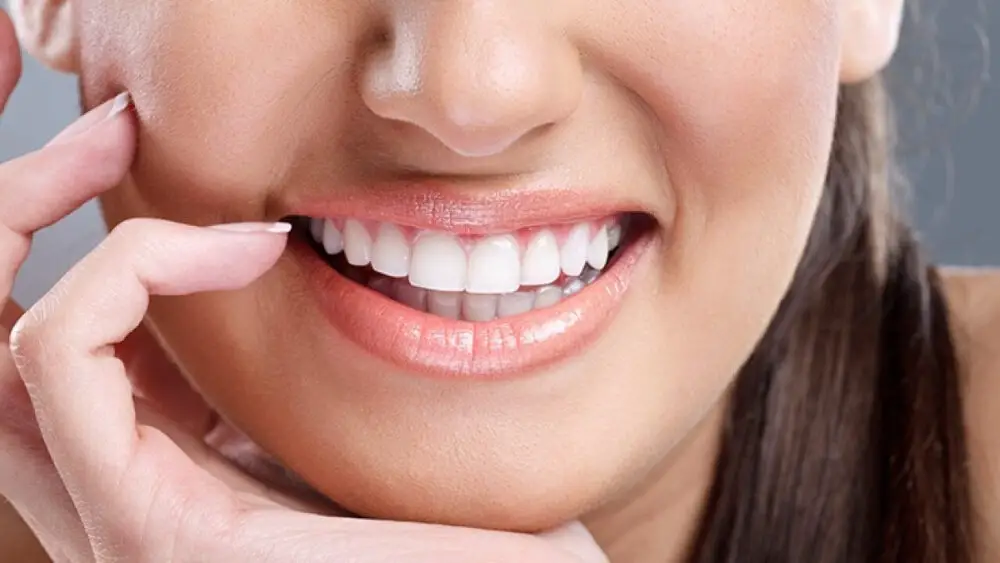
Oil pulling is an ancient Ayurvedic practice that has garnered immense popularity in recent times. It involves swishing a tablespoon of oil, usually coconut oil, in your mouth for 10-20 minutes and then spitting it out. This practice is believed to pull out toxins and bacteria from the mouth, improve oral health, and whiten teeth. The oil works as a natural cleanser and helps to remove plaque and stains from the teeth. It also promotes healthy gums and fresh breath. Oil pulling is a safe and effective method for maintaining oral hygiene, and it is easy to incorporate into your daily routine. There are several benefits of oil pulling for dental health. Firstly, it helps to prevent cavities and gum disease by removing harmful bacteria from the mouth. Secondly, it can reduce bad breath and improve overall oral hygiene. Thirdly, it has been found to whiten teeth naturally by removing surface stains caused by food and drinks. Lastly, oil pulling can also help to relieve headaches, sinus congestion, and other symptoms of allergies. Overall, oil pulling is a simple and affordable way to improve your dental health and achieve a brighter, healthier smile.
Oil pulling is an ancient Ayurvedic practice that involves swishing oil in the mouth for a few minutes to promote oral health. It is said to help remove toxins from the body, improve digestion, and whiten teeth. The most commonly used oils for oil pulling are coconut oil, sesame oil, and sunflower oil. To perform oil pulling, a tablespoon of oil is swished around in the mouth for about 15-20 minutes before being spit out. This process is believed to help remove bacteria and plaque from the mouth, which can contribute to dental stains and other oral health issues. While there is limited scientific evidence to support the effectiveness of oil pulling, many people claim to have experienced positive results from this practice.
One effective home remedy for removing dental stains is to use baking soda. To use it, mix a small amount of baking soda with water to create a paste. Apply the paste to your teeth using a toothbrush or your finger and let it sit for a few minutes before rinsing thoroughly with water. Baking soda works to remove stains by gently polishing the surface of the teeth, which can help to remove surface stains caused by coffee, tea, and other dark beverages. However, it is important to note that overusing baking soda can be damaging to your tooth enamel, so it should only be used once or twice a week as a stain-removing treatment.
There are numerous benefits to using home remedies for removing dental stains. Firstly, they are a cost-effective solution that doesn’t require you to visit the dentist. Secondly, they can be made with natural ingredients that don’t harm your teeth or gums. Thirdly, they are easy to make and use at home, so you don’t need to take time off work or school. However, it’s important to exercise precautions when using these remedies. Some ingredients like baking soda and lemon juice can be abrasive and damage your enamel if used too frequently or in large quantities. It’s also important to note that these remedies aren’t a substitute for professional teeth cleaning, and if you have severe dental stains, it’s better to consult a dentist.
Apple Cider Vinegar

Apple cider vinegar is a natural remedy that has been used for centuries to treat various ailments. It is made from fermented apple juice and is a potent source of acetic acid, which gives it its characteristic sour taste. Apple cider vinegar has a range of health benefits, including its ability to remove dental stains. It is a natural teeth whitener that can help remove stubborn yellow stains caused by coffee, tea, or smoking. The acetic acid in apple cider vinegar helps to dissolve the plaque that causes stains on teeth, leaving them looking brighter and healthier. Using apple cider vinegar to whiten teeth is easy. Simply mix a teaspoon of apple cider vinegar with a glass of water and use it as a mouthwash after brushing your teeth. Be sure to rinse your mouth thoroughly with water afterward to remove any residual vinegar. You can also add a teaspoon of apple cider vinegar to your regular toothpaste for an extra whitening boost. However, it’s important to note that excessive use of apple cider vinegar can damage tooth enamel, so it should be used in moderation. Overall, apple cider vinegar is a safe and effective natural remedy for removing dental stains and achieving a brighter, healthier smile. In addition to its teeth whitening properties, apple cider vinegar has numerous other health benefits. It has been shown to improve digestion, aid in weight loss, and lower blood sugar levels. It is also a natural remedy for acne, dandruff, and sunburn. Apple cider vinegar can be used both internally and externally to improve overall health and well-being. However, as with any natural remedy, it is important to consult with a healthcare professional before using apple cider vinegar as a treatment for any health condition. With its numerous health benefits and teeth whitening properties, apple cider vinegar is a versatile and valuable addition to any natural health toolkit.
Apple cider vinegar is a type of vinegar made from fermented apple juice. It is known for its acidic nature and has been used for various health and beauty benefits for centuries. When it comes to dental health, apple cider vinegar works as a natural teeth whitener due to its bleaching properties. The acetic acid in apple cider vinegar helps to break down and remove surface stains on teeth, leaving them looking brighter and cleaner. However, it is important to use apple cider vinegar in moderation as excessive use can lead to enamel erosion and damage to the teeth.
To remove dental stains using home remedies, first, try oil pulling. Swish a tablespoon of coconut oil in your mouth for 15-20 minutes before spitting it out. This helps to remove the bacteria that cause stains on teeth. Another option is to make a baking soda paste by mixing baking soda and water until it forms a thick paste. Apply the paste to your teeth and leave it for a few minutes before rinsing it off. Baking soda’s mild abrasive properties help to remove surface stains. You can also use apple cider vinegar by diluting it with water and swishing it around your mouth for a few minutes. However, be careful not to use it too often as it can erode tooth enamel. Finally, maintaining good oral hygiene by brushing and flossing regularly can help prevent dental stains from forming in the first place.
There are several benefits to using home remedies for removing dental stains. First and foremost, they are a cost-effective alternative to professional teeth whitening treatments. Additionally, these remedies are often made from natural ingredients, making them a safer option for those with sensitive teeth or gums. However, it is important to exercise caution when using any at-home whitening treatment. Overuse or misuse of these remedies can lead to tooth sensitivity, gum irritation, and even permanent damage to tooth enamel. It is always best to consult with a dentist before starting any whitening regimen to ensure that it is safe and appropriate for your specific dental needs.
Activated Charcoal
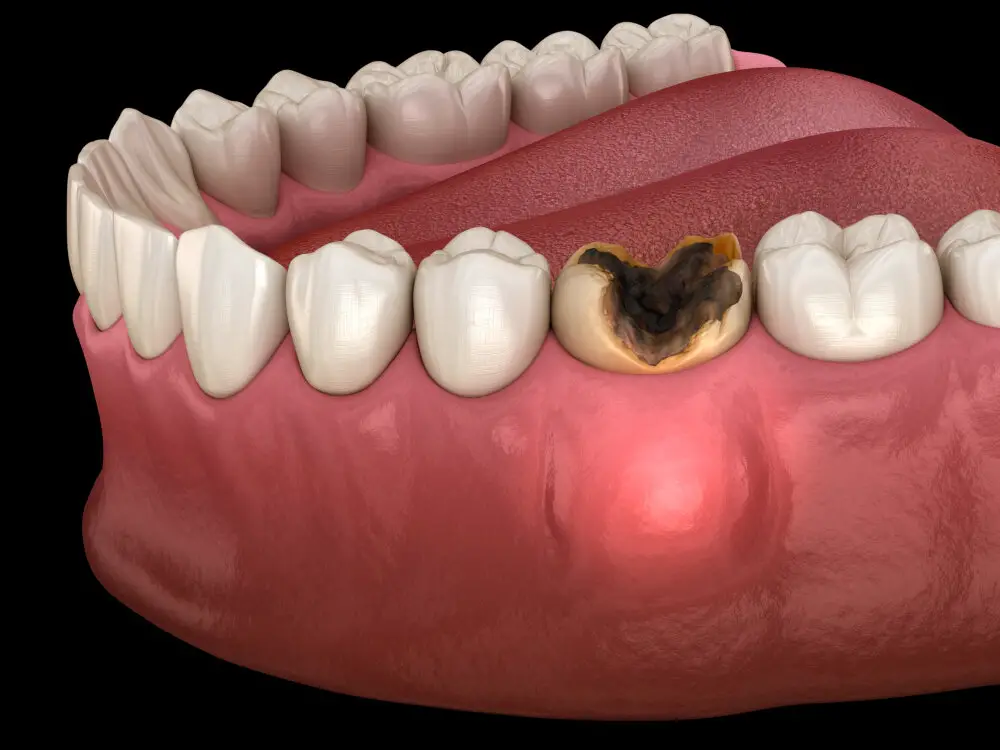
Activated charcoal is a black powder that is made from natural sources, such as coconut shells, wood, and peat. The charcoal is treated with oxygen to activate it, which increases its surface area and makes it highly absorbent. Activated charcoal has become a popular home remedy for removing dental stains and whitening teeth. It works by absorbing the tannins and pigments that cause discoloration on the teeth, leaving them looking brighter and whiter. The charcoal also has antibacterial properties, which can help to prevent tooth decay and gum disease. Activated charcoal can be found in toothpaste, mouthwash, and powder form. It is important to note that while activated charcoal can be effective in removing dental stains, it should not be used as a replacement for regular brushing and flossing. Using activated charcoal to whiten teeth is a safe and natural way to remove dental stains. It is a gentle alternative to harsh chemical treatments that can damage the enamel and cause sensitivity. Activated charcoal is easy to use and can be incorporated into your daily oral hygiene routine. Simply wet your toothbrush, dip it into the charcoal powder or paste, and brush your teeth as normal. Rinse thoroughly with water and follow up with your regular toothpaste. Activated charcoal can be used once or twice a week to maintain a brighter, whiter smile. With regular use, you’ll notice that your teeth are free from unsightly stains and look healthier and more radiant.
Activated charcoal is a type of carbon that is treated with oxygen to make its surface area more porous. It is widely used in the medical industry to treat drug overdoses and poisoning due to its ability to absorb toxins and chemicals. Activated charcoal is also used in various dental products such as toothpaste and mouthwash to whiten teeth. It works by attracting and trapping the impurities and stains on the surface of teeth, resulting in a brighter smile. Activated charcoal is a safe and effective way to remove dental stains, but it should be used in moderation as excessive use can damage the enamel of teeth.
One effective way to remove dental stains is by using baking soda. Baking soda is a natural abrasive that can help remove surface stains from teeth. To use it, mix a small amount with water to form a paste and apply it to the teeth using a toothbrush. Gently brush the teeth for about two minutes, then rinse with water. It’s important not to use too much baking soda, as it can be abrasive and damage the enamel of the teeth. Additionally, it’s recommended not to use baking soda more than once a week.
Improving the appearance of stained teeth can boost confidence and enhance overall oral hygiene. Home remedies such as baking soda, hydrogen peroxide, and oil pulling are effective in removing dental stains and preventing white spots from forming. However, it is important to exercise caution when using these remedies as excessive use can damage tooth enamel. It is recommended to consult a dentist before using any home remedies and to follow proper oral hygiene practices such as brushing and flossing regularly to maintain healthy teeth and gums.
In the article \Say Goodbye to White Spots on Teeth: Effective Home Remedies for Removing Dental Stains,\ several home remedies were discussed to help remove unsightly dental stains. Some of the remedies suggested included oil pulling, brushing with baking soda and hydrogen peroxide, and using apple cider vinegar as a mouthwash. Coconut oil pulling involves swishing coconut oil in the mouth for several minutes to help remove bacteria and stains. Brushing with baking soda and hydrogen peroxide is a gentle yet effective way to remove surface stains. Finally, apple cider vinegar can be used as a natural mouthwash to help kill bacteria and freshen breath. These home remedies offer natural and affordable ways to help remove dental stains and achieve a brighter, healthier smile.
Maintaining good oral hygiene is crucial for a healthy mouth and overall well-being. Neglecting oral hygiene can lead to a variety of dental problems, including gum disease, cavities, bad breath, and even tooth loss. Brushing twice a day, flossing daily and using mouthwash can help remove plaque and prevent bacteria buildup. A healthy diet that is low in sugary and acidic foods can also help maintain healthy teeth and gums. Regular dental checkups and cleanings can also catch any issues early on before they become more serious. By consistently practicing good oral hygiene, individuals can ensure a healthy and confident smile for years to come.
In conclusion, removing dental stains at home is a feasible task that can be achieved with the right remedies and consistent effort. While there are many commercial products available in the market, opting for natural remedies can provide a cost-effective and safe solution. Incorporating habits like oil pulling, maintaining good oral hygiene, and avoiding stain-inducing foods can help prevent future discoloration. However, it is important to note that not all stains can be removed at home, and professional dental cleaning may be necessary. Ultimately, taking care of our teeth is an essential part of overall health and well-being, and a bright, white smile can boost confidence and leave a lasting impression.
Conclusion
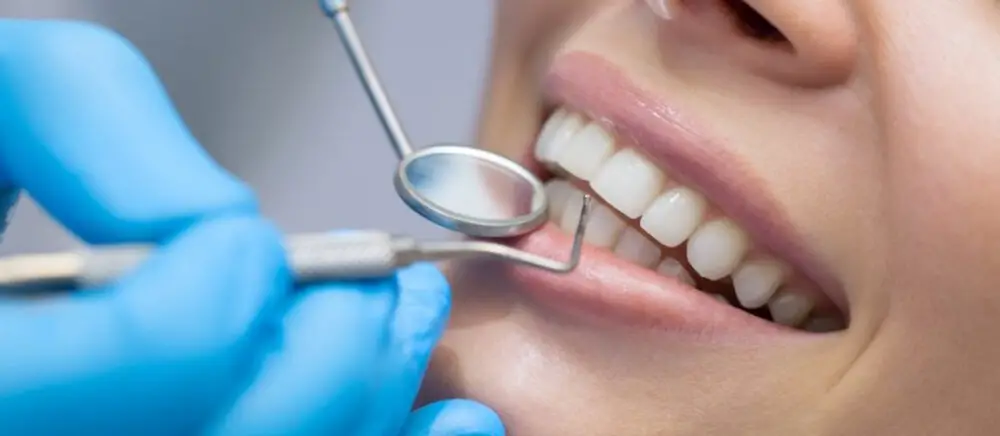
In conclusion, white spots on teeth can be unsightly and often lead to embarrassment and self-consciousness. However, there are a variety of effective home remedies for removing dental stains and achieving a brighter, more uniform smile. From oil pulling to baking soda and hydrogen peroxide, these natural remedies can help to break down and remove surface stains, while promoting overall oral health. It’s important to remember that these remedies should be used in moderation and in conjunction with good dental hygiene practices, such as brushing and flossing regularly. By incorporating these home remedies into your oral care routine, you can say goodbye to white spots on teeth and hello to a brighter, healthier smile.







